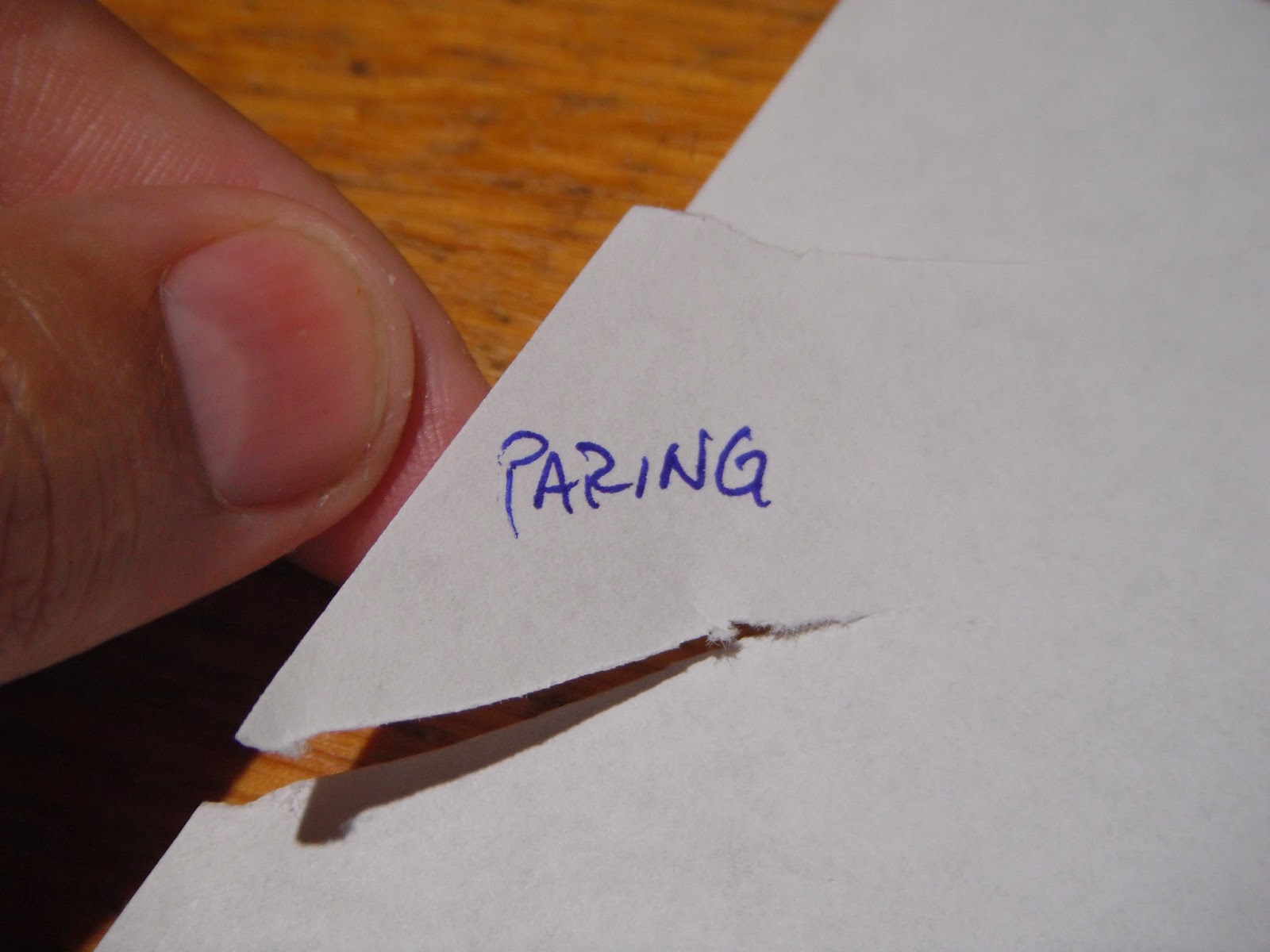But most of us don't have or want a lot of rarely used specialized cutting equipment.
Most of the foods in this category have a weak but clingy structure such that the gliding action of a cut causes the product to break apart as it clings to the knife in its stroke. Cheese, various pates and terrines and so on. Cheese is probably the one most frequently encountered.
For my eating preferences, cheese is something I often want cut in thin slabs for making a sandwich or similar things. Just about every guide to cutting cheese has you breaking it down into wedges for serving and eating it plain or as part of a cheese course.
And that's useful to know too. So here are a few visual guides to cutting cheese from various shapes.
Cheese Guide from Australia
Huffington Post article on softer cheeses
Wikihow, but notice that this is a thick slab and not good for sandwiches
Prepping the Knife
Dedicated cheese knives often have holes or kullens (often called dimples, but more correctly kullenschliff) to break the clinging action of the cheese. Others use ridges to break up the sticking. On your chef's knife, you experience a similar thing with many vegetables clinging after a cut. Just as the holes or kullens work to break the sticktion, you can create a surface on your chef's knife that has the same behavior.
Using a green Scotch Brite pad or equivalent when you clean your knife blade will scratch the surface up over time. On a Chef's knife, this is somewhat desirable in that it allows air in behind what you're cutting to minimize the sticking. It's not as effective as the holes, dimples or ridges, but you're making your one tool more versatile.
I like a tall knife for cutting cheese rather than a small knife like a paring knife. The tall blade rests against the cheese block during the cut and helps keep the slice an even thickness through out the cut.
I prefer a stainless knife to a carbon knife for cutting cheese. Growing up I had too many occasions where our carbon blade left a black smear of metallic tasting yuck on the cheese. Yes, the knife was not properly cared for as one in proper shape shouldn't do that. . Still, the experience soured me on carbon blades and cheese.
Keeping it Clean
Be prepared to clean your blade after every cut or every few cuts. As residue builds on the blade, this often aggravates the issue of the cheese sticking and deforming. You'll know when it's time to wipe the blade clean. On a similar note, you'll see people say to cut with wet blade or an oiled blade. This can help make a clean cut, but the oil or water residue is often just as undesirable on the cut cheese. No harm in trying it of course and seeing how you like the results.
Technique
Use the pinch grip. The pinch grip helps you keep the blade vertical. It WILL try to tip if it's dull or your pressure is not straight down. Using your off hand for additional pressure only compounds this effect, though I do use my off hand in this way. As with all knife skills, it takes some practice. There will be times the knife breaks free of the cut and plunges to the board with some force. This is not safe, nor good for the knife. It will happen as you learn. You must keep your fingers totally away from the edge, particularly with your off hand. No curling the fingers under. Do this at your own risk, and this is why dedicated tools exist for this task.
Ideally, your knife is long enough and the cheese block low enough that you can keep the knife tip on the board. This gives you more control and accuracy. But that won't happen every time.
This is not a quick drop as a guillotine, but a continuous even pressure. Avoid teeter-tottering the blade as that will lead to an uneven or failed cut.
In Use
Each knife will have a different minimal thickness it can cut evenly. This is related to the thickness of the knife itself. Here's my 10" Henkels with a broken cut and a plunge to the board in a brick of Tillamook sharp cheddar. I'm cutting too far forward for optimal pressure as well but some of that was from the jump.
Ok, my Henkel's isn't my sharpest knife and it's also on the thick side. As you can see from where it snapped, I'm cutting very thinly. Too thin for this blade.
Again with the Henkels, this time it didn't break off mid cut. This slice is a little thicker than the previous one. But it cut thinly at the end as the thickness of the blade wedged it out of line of the cut. This is a serviceable slice for a sandwich but not ideal. Cutting the cheese even a little thicker would have solved this problem.
Here's a good cut with an 8" Ikea Slitbar in VG10. Very sharp, thinner blade stock. Even thickness for the whole cut. Notice its thinner than the last cut with the Henkels and even for the whole slice. Each knife has a minimum thinness it can cut. It will also vary from cheese to cheese by type and even within type as some bricks of the this cheese are moister and cling more. Occasionally you'll get a cheese that just refuses to cut well.
Here's an oblique shot to illustrate residue build up. The thicker Henkels builds more residue for more resistance and trouble in the cut. The Ikea being thinner has less residue. Still, towards the thicker end of the knife at the handle, you can see increased smearing and residue. You can see from the smears that I'm cutting straight through, no gliding forward or sawing which breaks the cheese apart.








